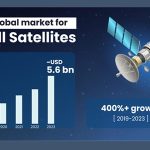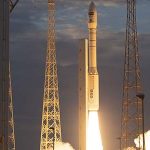Kompsat-6 will provide high-resolution radar imagery for Geographical Information Systems, disaster and environment monitoring as well as ocean and land management.
 Arianespace has announced a launch contract for the Earth Observation (EO) satellite Kompsat-6 that will be delivered to orbit for the Korea Aerospace Research Institute (KARI) by the Vega C. The launch is scheduled for no earlier than December 2024 from the Guiana Space Center in French Guiana.
Arianespace has announced a launch contract for the Earth Observation (EO) satellite Kompsat-6 that will be delivered to orbit for the Korea Aerospace Research Institute (KARI) by the Vega C. The launch is scheduled for no earlier than December 2024 from the Guiana Space Center in French Guiana.
Kompsat-6 is the second SAR (Synthetic Aperture Radar) imaging satellite developed by KARI. It will replace its predecessor, Kompsat-5, while deploying improved imaging radar performance. This Earth observation satellite will carry two payloads, the SAR instrument (X-Band Synthetic Aperture Radar) and the S-AIS (Satellite-Automatic Identification System). SAR payload is a high-resolution all-weather imager, which has applications in mapping, GIS, environment and disaster monitoring as well as management of oceans and land. The S-AIS payload is a maritime wireless system used to identify position, heading, destination and cargo of larger vessels with the main purpose of collision prevention between larger vessels and with additional applications in maritime traffic management.
Speaking about the contract, Giulio Ranzo, CEO of Avio, said: “This contract demonstrates once again the versatility of Vega C thanks to its increased payload capacity both in terms of mass and volume. We thank KARI for the confidence placed in our company and our rocket and Arianespace for the work done together.”
Stéphane Israël, CEO of Arianespace, added: “Arianespace is proud to support KARI. Since 1992 and the launch of the first Korean satellite on Ariane 4, we have orbited a total of eight spacecraft for both public and private entities there, including recently Geo-Kompsat-2A and 2B. With this upcoming launch, which comes on top of Kompsat-7 also to be launched by Vega C, we are delighted to serve the countrys interests with our light lift vehicle, and to deploy a new Earth observation satellite that will allow Korea to better monitor the environment and protect its population.”















































































